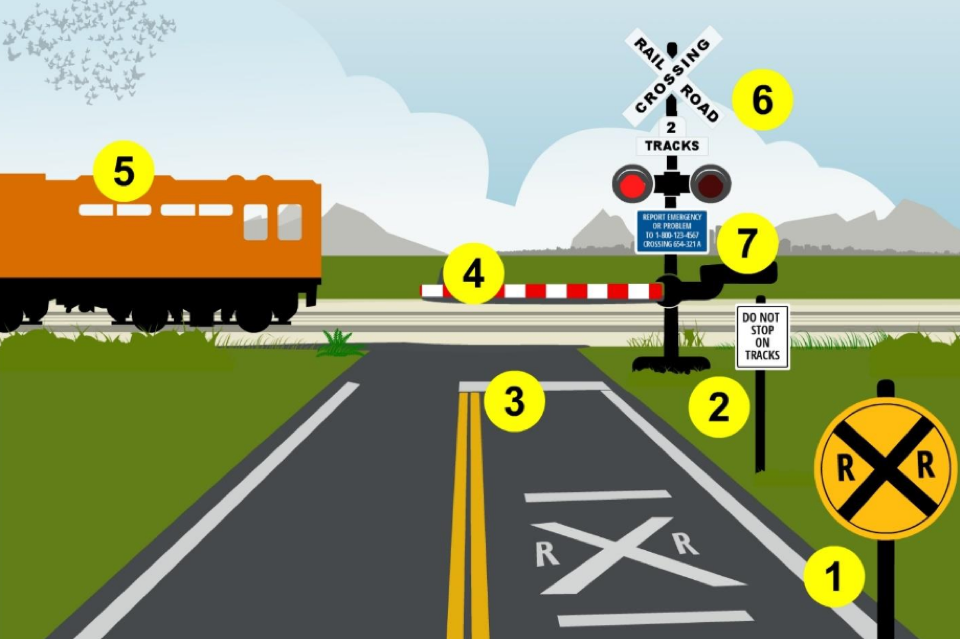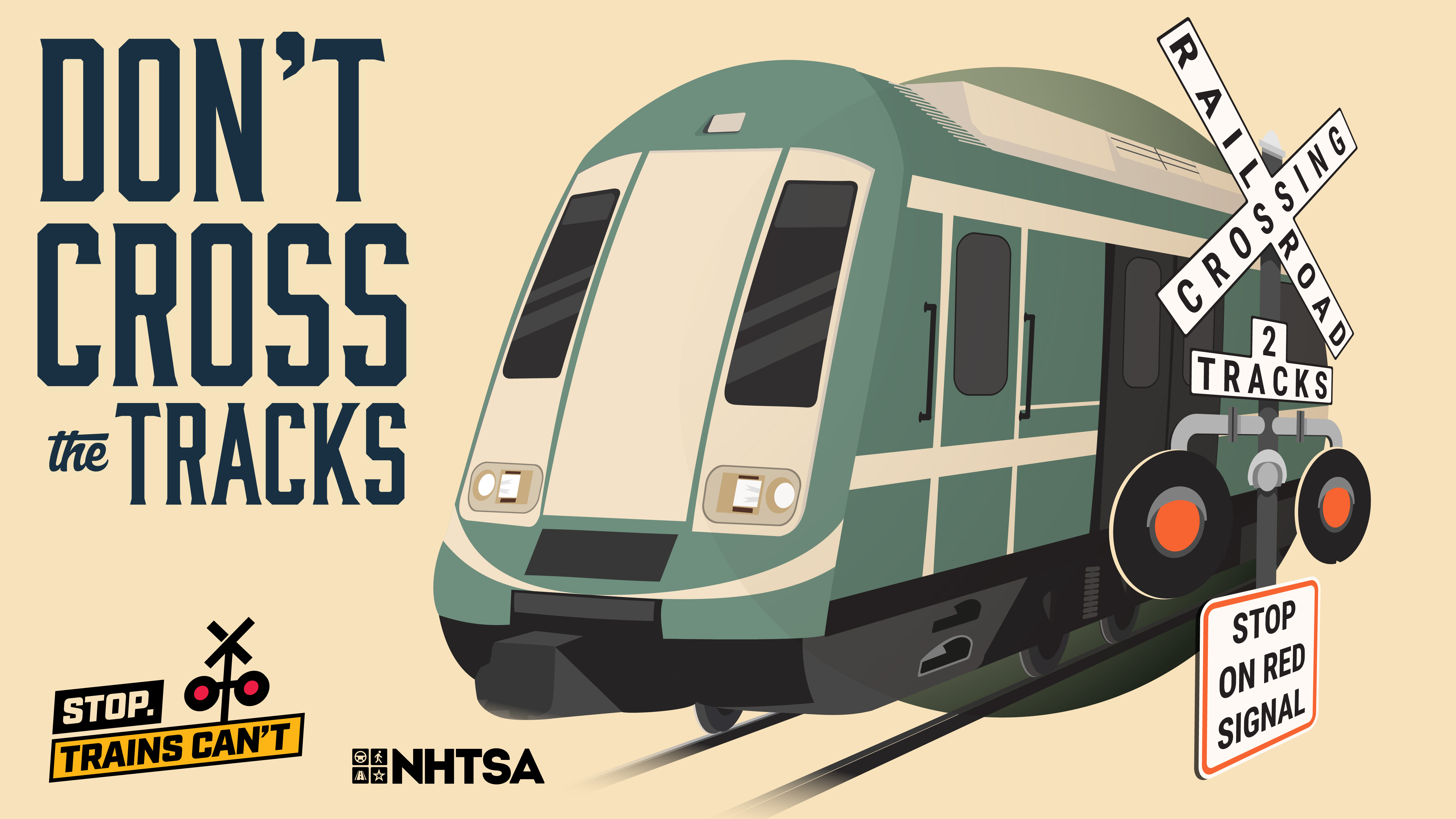English
Stop. Trains Can't.
Well…they can, but it takes a while.
A freight train may take up to a mile or more — the length of 18 football fields — to stop and a light rail train may require about 600 feet — the length of two football fields.
Injuries and deaths occur at rail crossings every day. In 2021, there were more than 1,600 collisions between vehicles and freight and commuter trains, and nearly 500 collisions at transit train crossings in 2020. The result: 133 people died and 644 people were injured. Most of these tragedies are preventable.
Freight and Commuter Trains
Steps for Navigating Crossings

- Stop, look both ways, and listen. Know that trains always have the right of way.
- Don’t stop on the tracks. Make sure you have room to get across. Once you enter the crossing, keep moving.
- Stop 15 feet away from flashing red lights, lowered gates, a signaling flagman or a stop sign.
- Never drive around a lowering gate or ignore signals.
- After a train passes, wait for gates to fully rise and for all lights to stop flashing before your cross.
- Never assume that there is only one train coming from a single direction.
- If your car stalls on a track, quickly get everyone out — even if you don’t see a train coming. Run away from the tracks and your car to avoid being hit by flying debris. Call the number on the blue emergency notification system sign. If the sign is not visible to you, call 911.

Transit Trains
Steps for Navigating Crossings
Rules vary when it comes to transit train crossings. This is because these light or passenger train crossings can be located in several different areas, including intersections and public and private driveways.
- When a transit train operates in mixed traffic, where the roadway is shared with all types of road users, the trains do not have the right-of-way over other roadway users at crossings and intersections. Instead, they are usually controlled with the same devices used by general traffic.
- If a light or passenger train operates within a separate traveled way, or along a street or railroad where vehicles have limited access, and cross at designated grade crossing locations only, the light rail vehicles usually have the right-of-way over other roadway users.
- Vehicles and other traffic are prohibited from light or passenger train crossings when a crossing is separated by something like a bridge or underpass, or protected by a fence or traffic barrier, and there are no traffic control devices.
